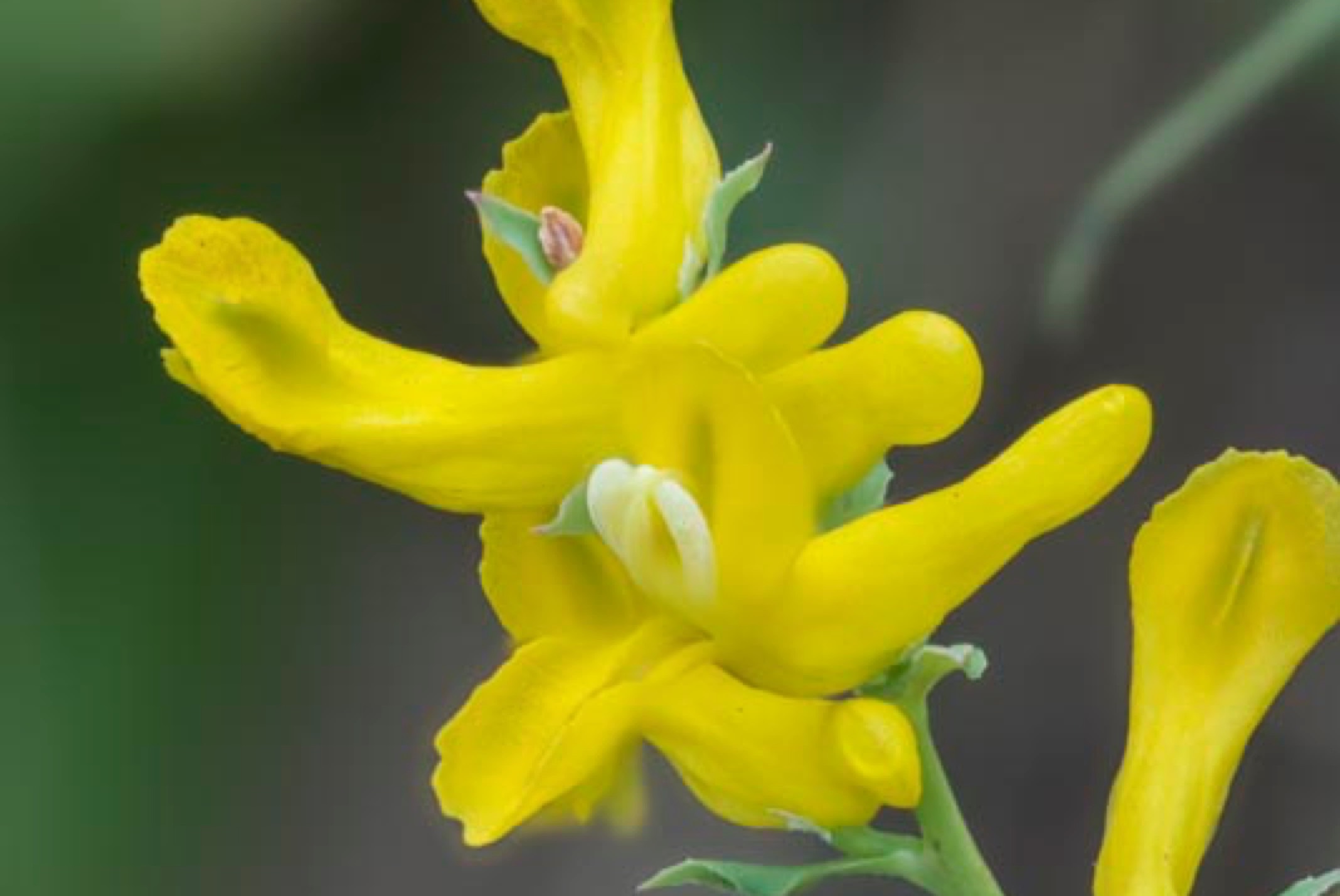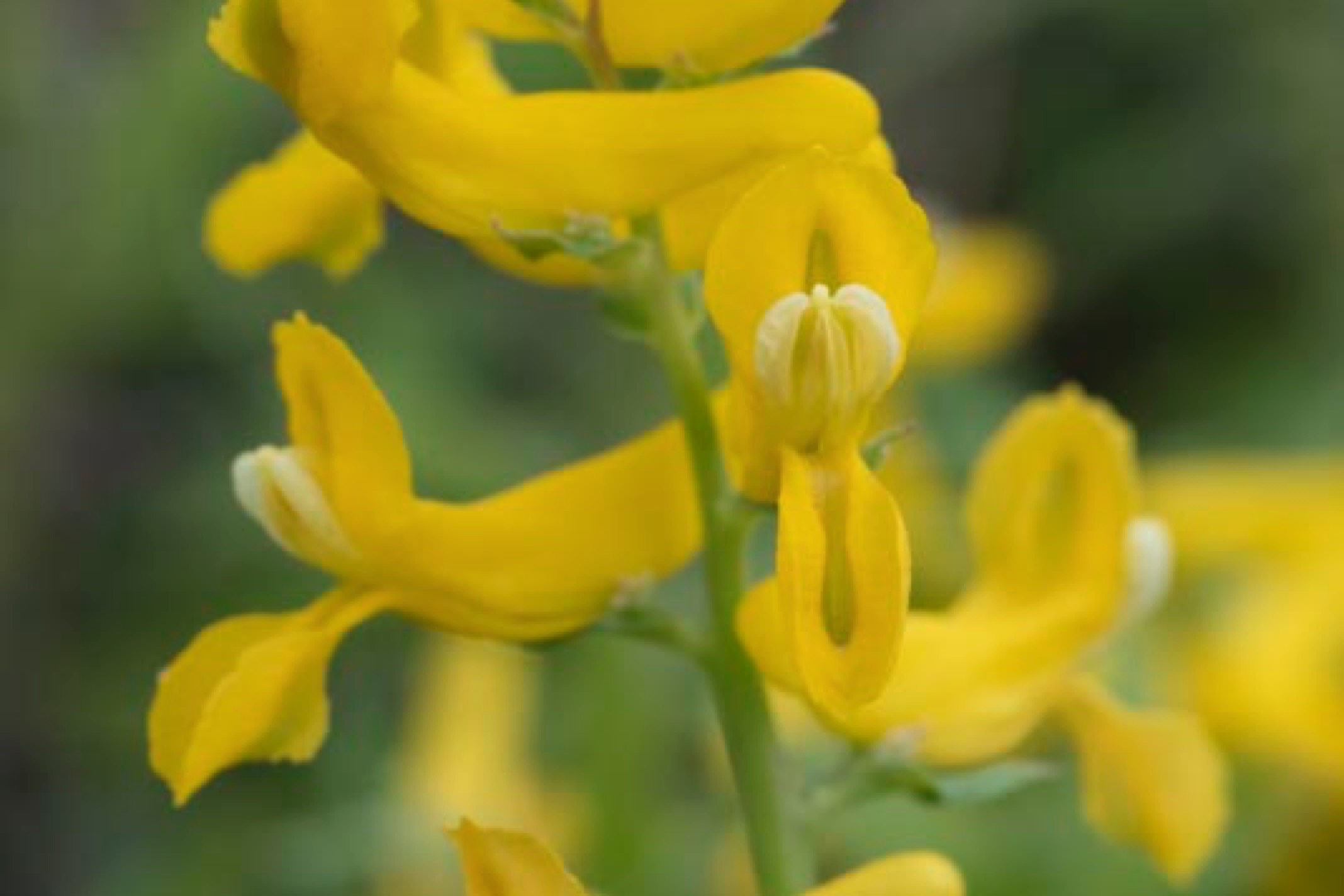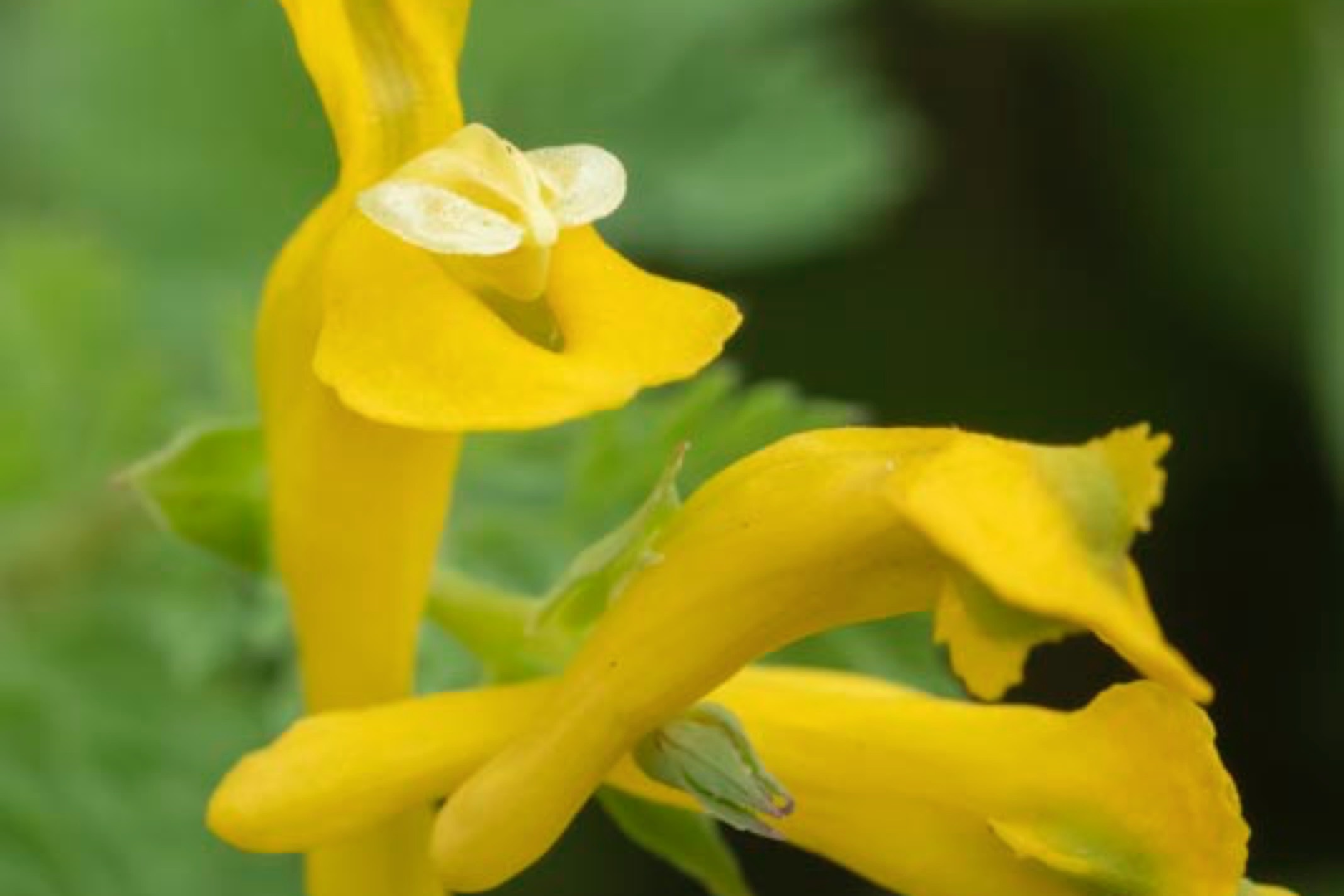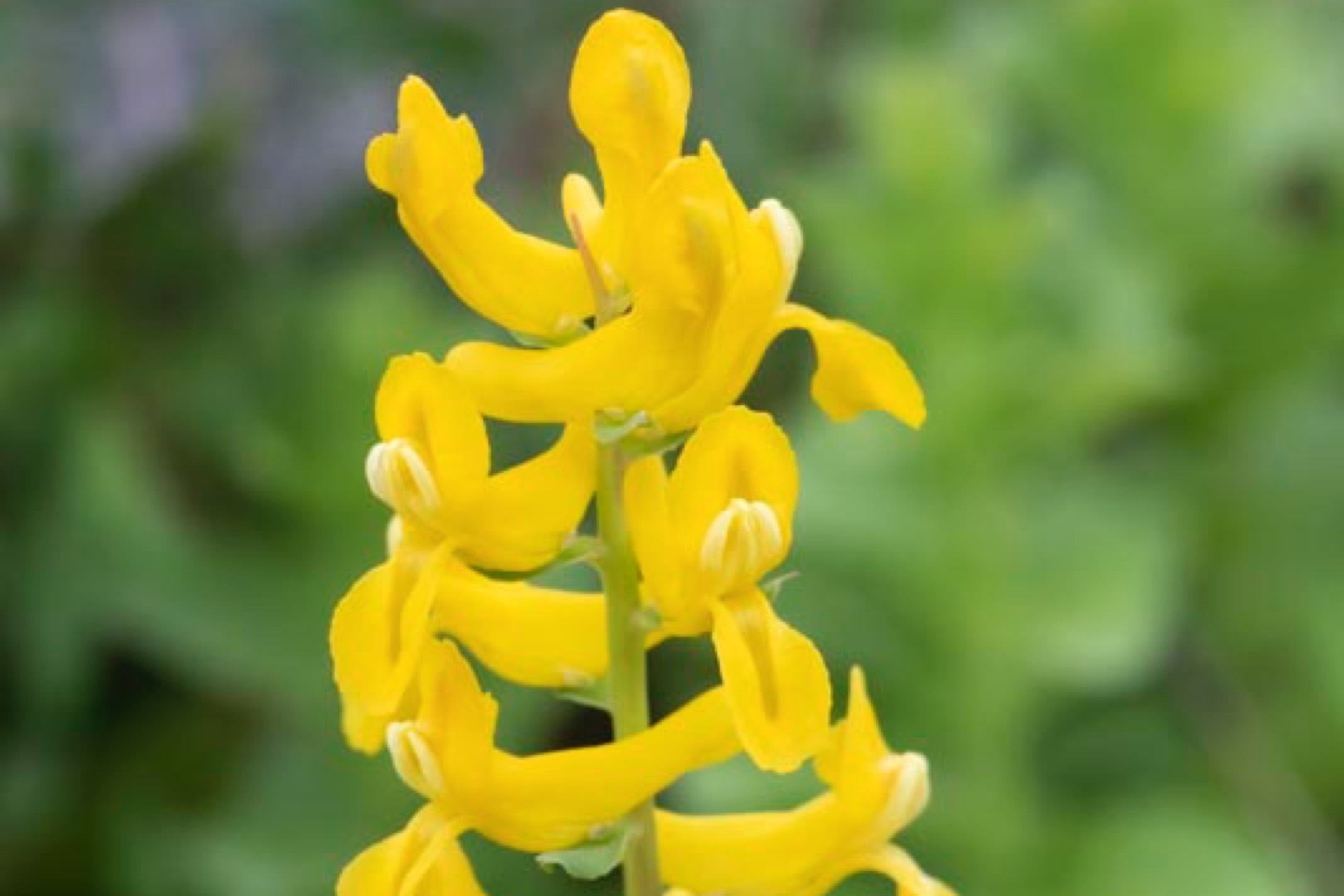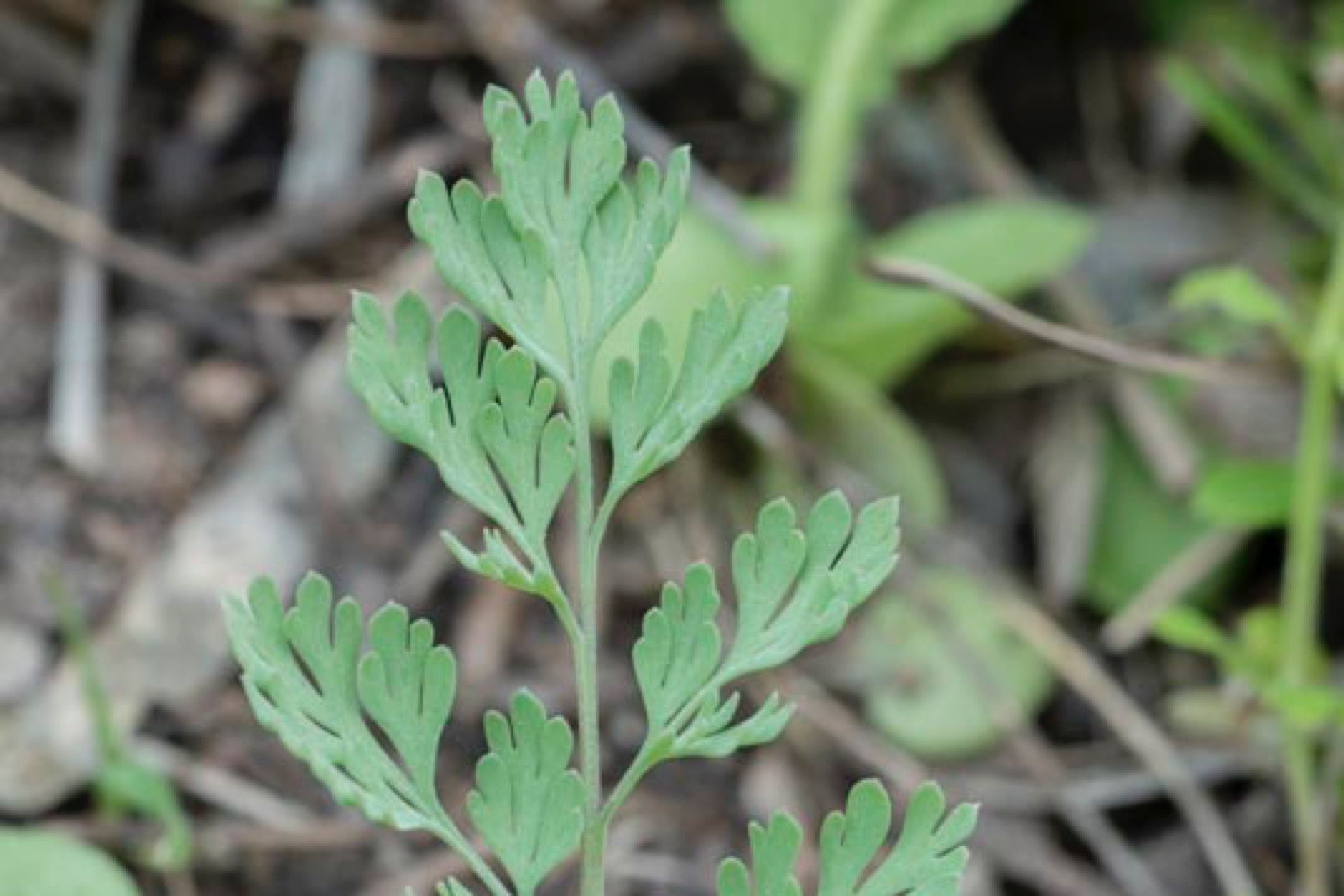Texas Wildbuds
Corydalis curvisiliqua
(Scrambled Eggs)
| Scientific Name | Corydalis curvisiliqua | USDA PLANTS Symbol | COCU2 |
| Common Name | Scrambled Eggs, Curvepod Fumewort | ITIS Taxonomic Serial No. | 19003 |
| Family | Papaveraceae (Poppy) formerly Fumariaraceae | SEINet Reference |
Click Here |
| Description |
Habitat: Sandy soils in disturbed areas, roadsides and open fields. Plant: Upright to ascending annual 8 to 10 inches tall; one to several usually-unbranched stems. Leaves: Dull green bi-pinnately-divided leaves with oblong to obovate ultimate leaflets that may be further incised; leaflet tips with small points. Inflorescence: Raceme extending above leaves with 8 to 20 yellow, tubular, curved flowers; conspicuous bracts 1/4 to 3/4-inch long and up to 1/4-inch wide along pedicel, tapering to points; 2 very short sepals beneath blossom; 4 bright yellow petals, upper one bending upward and about 3/4-inch long with a crested hood and a spur about 1/3-inch long extending backward; lower petal spurless and about 1/2-inch long bending downward; lateral 2 petals inconspicuous. Blooming Period: February to April. Fruit: Erect, slender, strongly in-curved capsules 3/4 to 1-1/4 inch long. References: "Wildflowers of the Texas Hill Country" by Marshall Enquist, "Manual of the Vascular Plants of Texas" by Correll and Johnston and Kansas Wildflowers and Grasses. |
BONAP Distribution Map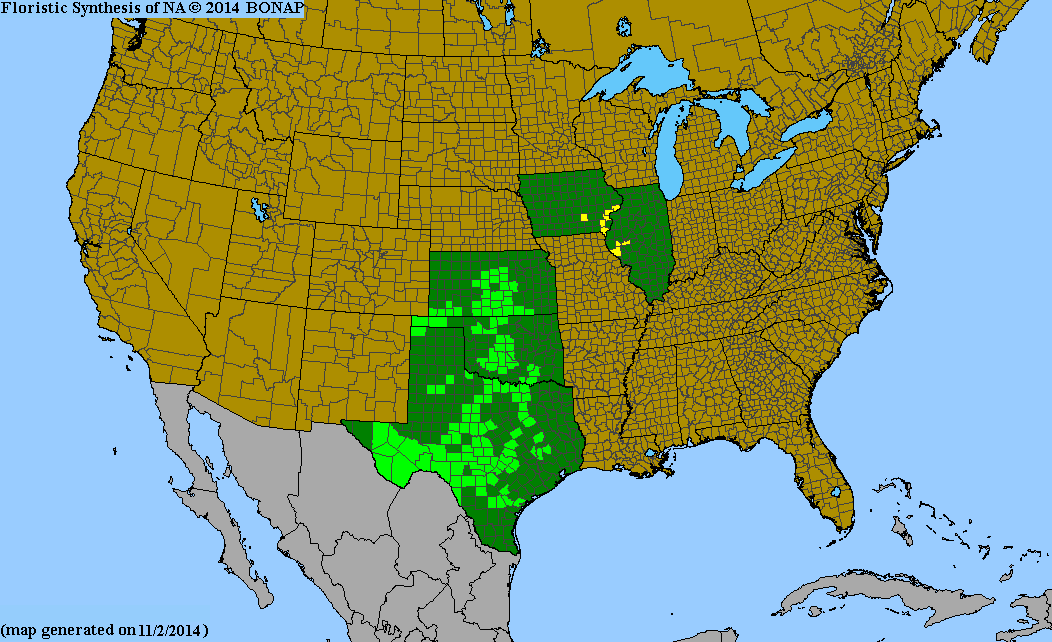 Map Color Key |
Texas Status: Native |
Banner photo of Castilleja indivisa and Lupinus ssp. taken along FM 1323 north of Johnson City, Blanco County
© Tom Lebsack 2025
Every attempt is made to provide accurate, up-to-date, and relevant information, but the completeness or accuracy of any information presented on this website cannot be guaranteed. I use authoritative references to insure high standards of accuracy and review and update the information frequently.
